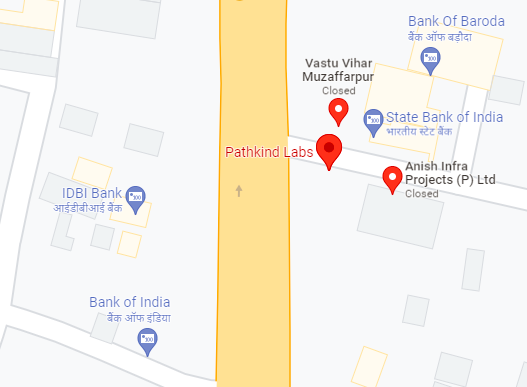We are just a message away
Stay Connected
Email – info@usfinancialservices.in

Thank you, US Financial Services, for assisting us in solidifying our stray thoughts at a critical juncture in our lives. On the path forward, we were decided, then undecided. As you are aware, we picked our route with your help and gentle support.

Your direct, smart, and practical advise was greatly appreciated. Your no-holds-barred analysis and guidance re-calibrated our entire course. We’ve reached a point of financial stability and peace of mind. Working with US Financial Services instils a sense of assurance.
Disclaimer:
- Investments in mutual funds are subject to market risks; please read all scheme-related materials carefully.
- The NAVs of the schemes may rise or fall in response to variables and pressures impacting the securities market, such as interest rate variations.
- The previous success of mutual funds does not guarantee that the schemes will perform well in the future. The Mutual Fund does not guarantee or assure any dividend under any of the schemes, and the availability and adequacy of distributable surplus is subject to change.
- Investors are advised to carefully read the prospectus and seek competent professional advice on the specific legal, tax, and financial ramifications of their investment/participation in the plan.
FAQ’s from our Customers
What is a Mutual Fund?
Mutual fund is a mechanism for pooling money by issuing units to the investors and investing funds in securities in accordance with objectives as disclosed in offer document. Investments in securities are spread across a wide cross-section of industries and sectors and thus the risk is diversified because all stocks may not move in the same direction in the same proportion at the same time. Mutual funds issue units to the investors in accordance with quantum of money invested by them. Investors of mutual funds are known as unitholders. The profits or losses are shared by investors in proportion to their investments. Mutual funds normally come out with a number of schemes which are launched from time to time with different investment objectives. A mutual fund is required to be registered with Securities and Exchange Board of India (SEBI) before it can collect funds from the public.
How is a mutual fund set up?
A mutual fund is set up in the form of a trust, which has sponsor, trustees, Asset Management Company (AMC) and custodian. The trust is established by a sponsor or more than one sponsor who is like promoter of a company. The trustees of the mutual fund hold its property for the benefit of the unitholders. AMC approved by SEBI manages the funds by making investments in various types of securities. Custodian, who is required to be registered with SEBI, holds the securities of various schemes of the fund in its custody. The trustees are vested with the general power of superintendence and direction over AMC. They monitor the performance and compliance of SEBI Regulations by the mutual fund. SEBI Regulations require that at least two-thirds of the directors of trustee company or board of trustees must be independent i.e. they should not be associated with the sponsors. Also, 50% of the directors of AMC must be independent. All mutual funds are required to be registered with SEBI before they launch any scheme.
What are Tax Saving Schemes ?
These schemes offer tax rebates to the investors under specific provisions of the Income Tax Act, 1961 as the Government offers tax incentives for investment in specified avenues, for example, Equity Linked Savings Schemes (ELSS) under section 80C and Rajiv Gandhi Equity Saving Scheme (RGESS) under section 80CCG of the Income Tax Act, 1961. Pension schemes launched by mutual funds also offer tax benefits. These schemes are growth oriented and invest pre-dominantly in equities. Their growth opportunities and risks associated are like any equity-oriented scheme.
What is a Fund of Funds (FoF) scheme?
A scheme that invests primarily in other schemes of the same mutual fund or other mutual funds is known as a FoF scheme. A FoF scheme enables the investors to achieve greater diversification through one scheme. It spreads risks across a greater universe.
What are Exchange Traded Funds (ETFs)?
ETFs are mutual fund units that investors can buy or sell at the stock exchange. This is in contrast to a normal mutual fund unit that an investor buys or sells from the AMC (directly or through a distributor). In the ETF structure, the AMC does not deal directly with investors or distributors. Units are issued to a few designated large participants called Authorised Participants (APs). The APs provide buy and sell quotes for the ETFs on the stock exchange, which enable investors to buy and sell the ETFs at any given point of time when the stock markets are open for trading. ETFs therefore trade like stocks and experience price changes throughout the day as they are bought and sold. Buying and selling ETFs requires the investor to have demat and trading accounts.
What is a Load or no-load Fund?
A Load Fund is one that charges a percentage of NAV for entry or exit andthe load structure in a scheme has to be disclosed in its offer documents. Suppose the NAV per unit is INR 10. If the entry as well as exit load charged is 1%, then the investors who buy would be required to pay INR 10.10 (10 + 1% of 10) per unit and those who offer their units for repurchase to the mutual fund will get only INR 9.90 (10 – 1% of 10) per unit. Currently, in India, the exit load charged is credited to the scheme. The investors should take the loads into consideration while making investment as these affect their returns. However, the investors should also consider the performance track record and service standards of the mutual fund which are more important. A no-load fund is one that does not charge for entry or exit. It means the investors can enter the fund/scheme at NAV and no additional charges are payable on purchase or sale of units. SEBI has mandated that no entry load can be charged for any mutual fund scheme in India.
Can a mutual fund change the asset allocation while deploying funds of investors?
Considering the market trends, any prudent fund manager can change the asset allocation, i.e., he can invest higher or lower percentage of the fund in equity or debt instruments compared to what is disclosed in the offer document. It can be done on a short term basis on defensive considerations i.e. to protect the NAV. Hence, the fund managers are allowed certain flexibility in altering the asset allocation considering the interest of the investors. In case the mutual fund wants to change the asset allocation on a permanent basis, they are required to inform the unit holders and give them option to exit the scheme at prevailing NAV without any load.
What is a direct plan?
SEBI has mandated mutual funds to compulsorily launch a direct plan for direct investments, i.e., investments not routed through a distributor, from 01 January 2013. Such separate plan has a lower expense ratio excluding distribution expenses, commission, etc., and no commission is to be paid from such plans. The plan also has a separate NAV. Investment can be made in lump sum, i.e. a onetime payment, or through a Systematic Investment Plan (SIP).
What is a Systematic Investment Plan (SIP)?
A SIP allows an investor to invest regularly. One puts in a small amount every month that is invested in a mutual fund. A SIP allows one to take part in the stock market without trying to second-guess its movements.
For example:-
X decides to invest INR 1,000 per month for a year.
When the market price of shares fall, X benefits by purchasing more units; and is protected by purchasing less when the price rises as explained below. Within one year, X has 1,186 units by investing just INR 1,000 every month at an average cost of 12000/1186.15 = 10.1170. This is as against 12,000/10 = 1,000 units or 12000/11.5 = 1043.5 units or 12000/9 = 1,333.3 units if X had invested lump sum on 1 Jan, 1 Jun or 1 May, respectively.Can I invest in Cash ?
Yes, cash investments up to INR 50,000 per investor, per mutual fund, per financial year can be made in mutual funds. However, any repayment (redemption/dividend) is made only through bank channel.
Can non-resident Indians (NRIs) invest in mutual funds ?
Yes, non-resident Indians can also invest in mutual funds. Necessary details in this respect are given in the offer documents of the schemes.
Can an investor appoint a nominee for his investment in units of a mutual fund?
Yes. The nomination can be made by individuals applying for/holding units on their own behalf singly or jointly. Non individuals including society, trust, body corporate, partnership firm, Karta of Hindu Undivided Family, holder of Power of Attorney cannot nominate.

